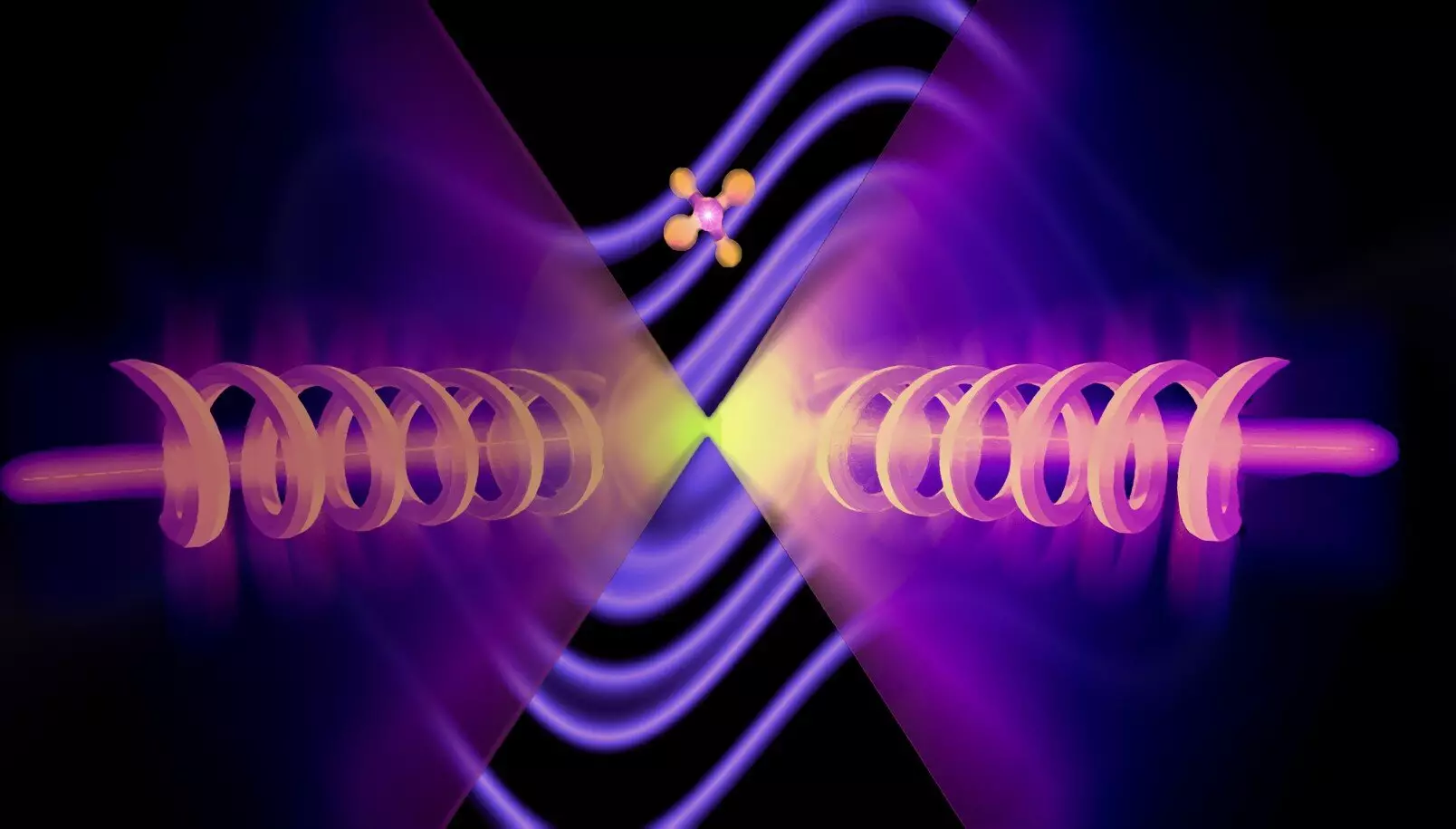Quantum mechanics never ceases to amaze scientists with its peculiar and counterintuitive phenomena. In a recent study conducted by researchers at the University of Warsaw’s Faculty of Physics, the observation of azimuthal backflow in light has brought us one step closer to understanding and harnessing the potential of quantum backflow. This breakthrough has implications for the study of light-matter interactions and is a significant advancement in the field of quantum mechanics.
In classical mechanics, the movement of objects follows predictable paths and doesn’t involve sudden reversals. However, in the quantum realm, particles can exist in a superposition, simultaneously occupying multiple positions. This opens up the possibility for quantum particles to exhibit a peculiar phenomenon known as backflow. Backflow refers to the probability of particles moving backward or spinning in the opposite direction during certain periods of time. Physicists have long been intrigued by backflow but had yet to observe it experimentally in quantum systems. However, it has been successfully achieved in classical optics using beams of light.
Theoretical works by Yakir Aharonov, Michael V. Berry, and Sandu Popescu explored the connection between backflow in quantum mechanics and the anomalous behavior of optical waves at local scales. In 2010, Professor Michael Berry described the phenomenon of superoscillation, where the local oscillation of a superposition is faster than its fastest Fourier component. Previous experiments, such as those conducted by Y. Eliezer et al. and Dr. Anat Daniel et al., succeeded in observing optical backflow. They achieved this by manipulating the interference of light beams and synthesizing complex wavefronts.
Building on these previous studies, researchers at the University of Warsaw’s Faculty of Physics went a step further and observed azimuthal backflow in two dimensions. By superposing two light beams twisted in the clockwise direction, they were able to locally observe counterclockwise twists in the dark regions of the resulting superposition. This breakthrough was made possible by using a Shack-Hartman wavefront sensor, which provides high sensitivity for two-dimensional spatial measurements. The researchers were able to demonstrate the azimuthal backflow effect and confirm the existence of this phenomenon.
The observation of azimuthal backflow not only expands our understanding of quantum mechanics but also has practical implications. Light beams with azimuthal phase dependence have found applications in fields such as optical microscopy and optical tweezers. Optical tweezers, in particular, enable the manipulation of objects at the micro- and nanoscale and are currently being used to study various biological phenomena. The researchers highlight that their findings could have implications in optimizing optical trapping and designing ultra-precise atomic clocks.
The observation of backflow in quantum mechanics is closely connected to the phenomenon of superoscillation. Superoscillation occurs when the local oscillation of a superposition is faster than its fastest Fourier component. Although impractical for everyday use due to the small amplitude of waves in super-oscillatory regions, it demonstrates the potential power and complexity of wave behavior. The discovery of backflow as a manifestation of rapid phase changes provides further insights into the study and manipulation of waves.
The research conducted by the University of Warsaw’s Faculty of Physics represents a significant step towards observing quantum backflow in two dimensions. While one-dimensional backflow has been theoretically explored, its two-dimensional counterpart is believed to be more robust. By successfully demonstrating azimuthal backflow in light, these researchers have paved the way for further studies and potential applications in the realm of quantum mechanics.
The recent observation of azimuthal backflow in light by researchers at the University of Warsaw’s Faculty of Physics marks a significant advancement in the field of quantum mechanics. This discovery sheds light on the peculiar behavior of quantum particles and opens up new possibilities for studying light-matter interactions. With further research and advancements in this field, we may unlock the full potential of quantum backflow and its applications in various scientific and technological domains.


Leave a Reply